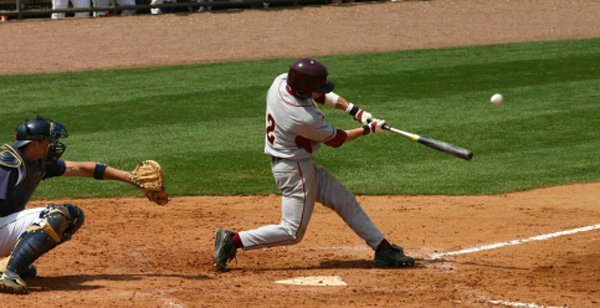
Drama on the diamond seemed to tag along with right-handed pitcher Ralph Terry. In the early 1960s, he pitched in two dramatic World Series seventh games, winning one and losing the other. Those two games are the best-remembered highlights of Terry's career as a starting pitcher for the New York Yankees and four other major league teams.
Terry was signed by the Yankees in 1953 and made his major league debut at the end of the 1956 season, going 5.2 innings for a 4-3 victory over the Boston Red Sox. He made the Yankees staff to stay in 1957, but then was traded with Woodie Held, Billy Martin and Bob Martyn to the Kansas City Athletics for Ryne Duren, Jim Pisoni and Harry Simpson. Terry had a combined record of 5-12 as a starter for the A's with a 3.33 ERA. In 1958, he was 11-13 for Kansas City with a 4.24 ERA. He led the team in games started (33) and innings pitched (216.2).
Two months into the 1959 season, Terry was returned to the Yankees. He and Hector Lopez were sent to New York for Johnny Kucks, Jerry Lumpe and Tom Sturdivant. He posted a combined record of 5-11 for 1959 with a 3.39 ERA for the New York team that finished third in the American League in 1959.
Terry began to hit his stride with Casey Stengel's Yankees. He went 10-8 in 1960 with a 3.40 ERA. In the 1960 World Series against the Pittsburgh Pirates, he lost Game #4 to Vern Law 3-2, and then was the loser in relief in the seventh game, giving up Bill Mazeroski's walk-off home run in the bottom of the ninth.
In 1961, Whitey Ford's 25-4 record earned him that season's Cy Young award, but Terry also had an outstanding season for the Yankees, going 16-3 with a 3.15 ERA. In the 1961 World Series against the Cincinnati Reds, he lost Game 2 to the Reds' ace, Joey Jay, the Yankees' only loss in the 5-game series.
Terry's 1962 season was the best of his career. He went 23-12 with a 3.19 ERA. He led the American League in victories, games started (39) and innings pitched (298.2), as well as in home runs allowed (40). He also had a career-best 176 strikeouts.
In the 1962 World Series against the San Francisco Giants, Terry kept his 1962 mojo going. He lost Game #2 by a score of 2-0 to San Francisco ace Jack Sanford and off a first inning home run by Willie McCovey. But Terry came back and beat Sanford 5-3 in the fifth game, and then Terry won the seventh game in dramatic fashion by a 1-0 score, again outdueling Sanford. The Giants had Willie Mays and Matty Alou in scoring position with 2 outs in the bottom of the ninth, when McCovey hit a blistering line drive that was snared by second baseman Bobby Richardson, releasing any ghosts left over from the 1960 World Series.
In 1963, Terry had a 17-15 campaign with a 3.22 ERA. He again led the American League in games started (37). He also led in complete games (18) and pitched 268 innings. But Terry's workload started to show in his performance. His 1964 record slipped to 7-11 with a 4.54 ERA, as arm problems limited him to 14 starts and 115 innings pitched.
In October 1964, the Yankees shipped Terry to the Cleveland Indians to complete a deal that earlier had brought Pedro Ramos to New York. Terry had a good year for a lackluster Cleveland team, going 11-6 with a 3.69 ERA. Despite continuing arm problems, he managed 26 starts for the Indians, and pitched 165.2 innings. But he had little left.
Just before the start of the 1966 season, the Indians traded Terry to the Kansas City Athletics for pitcher John O'Donohue. He won only one game for the A's, and was acquired in August by the New York Mets. Terry was 0-1 for the Mets in 11 appearances, and he retired after being released by the Mets in 1967.
Terry was a member of the 1962 American League All-Star team. In 12 big league seasons, he compiled a record of 107-99 with 75 complete games and 20 shutouts. His career ERA was 3.62.
What exactly is the Robert Trent Jones Alabama Golf Trail Project?


Enjoy Your Charter Fishing Miami on Vacations

Copyright © www.mycheapnfljerseys.com Outdoor sports All Rights Reserved